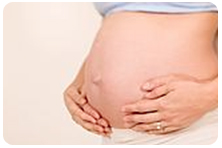
The purpose of preimplantation genetic diagnosis for aneuploidy screening is to select for transfer only chromosomally normal embryos so as to Increase the implantation rate for IVF patients, Lower the risk for miscarriage related to an aneuploidy condition and reduce the risk of having a baby with an aneuploidy condition.
1. Reduction in the Chance of Having a Child with Aneuploidy: According to current figures, the chance for a woman delivering a baby with aneuploidy is on average 1% if she is 35-39 years of age and ~3.5% if she is 40-45. PGD does lower the chance of having an affected baby. However, we are unable to test all of the chromosomes at present. We therefore recommend that prenatal testing be performed in the resultant pregnancy via chorionic villous sampling or amniocentesis in order to confirm our diagnosis from PGD and to rule out other aneuploidies for which we do not test.
2. Increased Implantation Rate: It is well known that the pregnancy rate after in vitro fertilization decreases dramatically with maternal age. Aneuploid embryos have much lower survival rates than normal embryos, and half of them (the ones missing a chromosome) seldom implant. It appears likely that the decrease in pregnancy rates with maternal age is mostly caused by a corresponding increase in the number of aneuploid embryos. By performing PGD for aneuploidy and transferring only chromosomally normal embryos, we might be able to increase the pregnancy rates noticeably. In several recent studies, an increase in implantation rates after PGD has been demonstrated. In addition, the implantation rate increased from 18% in controls to 23% in PGD patients when we the number of chromosomes tested was increased.
3. Reduction in Pregnancy Losses: In women 35 and older, approximately 35% of pregnancies are miscarried. Aneuploidy accounts for 50%, or more of these losses. By transferring only chromosomally normal embryos, the number of pregnancies going to term should increase. Recent studies have detected a significant reduction in pregnancy losses after PGD, from 23% to 9%. The increase in implantation rate and the significant decrease in pregnancy loss rate resulted in a significant increase in ongoing pregnancies and delivered babies.

It is well known that the pregnancy rate after in-vitro fertilization decreases dramatically with maternal age. Aneuploid embryos have a lower survival rate than normal embryos and the majority seldom implant. It appears likely that the decrease in pregnancy rates with maternal age is in part caused by the increase in aneuploid embryos. By testing embryos for common aneuploid conditions, we may be able to increase the pregnancy rates noticeably.
Aneuploidy is the cause in 50% or more of pregnancy losses. By testing for common aneuploidy conditions, the risk for miscarriage should decrease. Several authors have found that the increase in implantation rate and the decrease in miscarriages has resulted in a significant increase in ongoing pregnancies and healthy babies delivered by our patients.
However, a review of the published, peer-reviewed, scientific literature indicates there is insufficient evidence to support the use of PGD-AS of the most common aneuploidy in order to improve IVF success rates in women with a history of recurrent pregnancy loss, repeated IVF failures and/or advanced maternal age. Impact on overall net health outcomes remains unclear at this point.
Additionally, it is not known whether this testing precludes the need for amniocentesis or CVS. Evidence has been limited to a few studies. Munne et al. (1999) conducted a controlled three-center study where controls were matched to test patients blindly or previous pregnancy outcome was known. The authors investigated the efficacy of PGD-AS in women of advanced maternal age and reported a decrease in recurrent spontaneous abortion rate from 25.7% per patient in the control group to 14.3% in the PGD-AS testing group. Statistical analysis showed a small but significant decrease in miscarriage rate and an increase in ongoing pregnancy rate. Additional well-designed, multi-center studies are needed before the role of preimplantation genetic screening for aneuploidy can be established.